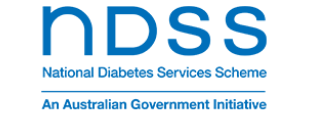Diabetes in Schools: A Team Approach
Supporting a student to manage their type 1 diabetes in a school setting is a shared responsibility – it needs a team approach involving principals, school staff, parents or carers and health professionals.
Students are encouraged to be involved in decision making and their own type 1 diabetes care needs to the extent they are able to. Health professionals who are part of the clinical treating team will have an ongoing relationship with the student and their family, which will include regularly assessing the young person’s level of independence and understanding in regards to daily type 1 diabetes decisions and management.
Parents or carers are often responsible for managing communication and relationships between members of the school diabetes team and the student’s clinical treating team.
Health professionals will consult with the parents or carers in developing the student’s diabetes management plan. The plan contains important clinical advice on how a student’s type 1 diabetes should be managed every day, including at home and in the school environment.
Once the diabetes management plan is finalised the parents or carers will provide a copy of the plan to the school. The school principal then has the responsibility to commence the process of determining which actions or adjustments the school will make to support the young person whilst at school.
Members of the clinical treating team will need to ensure the parent or carer has the understanding and confidence to relay key information about the student’s diabetes management to the school, as the student’s parent or carer will often be the main person to communicate this information to the school.
Parents or carers should also be encouraged to provide consent to the disclosure of private and confidential information between the clinical treating team and schools, so that information can be exchanged between these parties so far as is reasonable and required for the effective implementation of the diabetes management plan in the school setting.
Principals and designated staff may need to contact the student’s treating clinicians to clarify points in the diabetes management plan. All school staff should undertake basic training in understanding type 1 diabetes and its management – Level 1 Introductory training is provided free of charge as part of the Diabetes in Schools program. In addition, designated staff, who have been appointed by a principal and who agree to provide support to a student with type 1 diabetes take responsibility for the day-to-day management of a student’s type 1 diabetes in the school environment. In some states, responsibility for supporting student health needs will already be agreed as part of the staff member’s condition of employment. To competently and safely support a student with type 1 diabetes additional Level 2 and Level 3 training is available to designated staff to ensure that they are competent to monitor blood glucose levels and administer or supervise the administration of insulin. This training may be provided by the clinical treating team.
The role of health professionals and the clinical treating team
The care of young people with type 1 diabetes requires a team of specialised health professionals to help support and educate families and young people in type 1 diabetes management. The clinical treating team recommends and oversees a student’s clinical care and medical treatment.
The clinical treating team also plays an important role in supporting a student with type 1 diabetes to remain healthy and safe and able to participate in their school life. This includes working with parents or carers to develop a student’s diabetes management plan. The clinical treating team will prescribe an appropriate treatment regime for the young person, which will be documented in the diabetes management plan in a way that helps schools to understand how to manage the student’s needs when they are at school. The plan should provide clarifying information or instructions so that parents and carers and school staff understand what is required to effectively implement the plan in the school setting.
The diabetes management plan, developed by the clinical treating team, is used by the school to help develop and put in place other plans and processes, which aim to effectively manage the student’s type 1 diabetes (and other health conditions, where relevant) during school hours.
Clinical treating teams play an important, ongoing role in supporting young people with type 1 diabetes including working collaboratively with the school and parents or carers, updating the student’s diabetes management plan as required and communicating these changes to the student and their family.
Appropriate training and education of school staff is integral to the effective support of students with type 1 diabetes in schools. School principals should nominate designated staff, who in some cases volunteer, to take on extra responsibility to support students to manage their type 1 diabetes. In some cases, this will involve administering insulin or helping students to self-administer their insulin.
The designated staff should have access to training that allows them to safely support the student’s health needs and administer insulin, or supervise its administration. As the clinical treating team is best placed to understand the student’s health needs, it is optimal for the clinical treating team to provide or oversee the training for designated school staff. This gives the student’s treating team the opportunity to effectively communicate and educate designated staff on the individual care needs of the student as set out in their diabetes management plan.
Where the clinical treating team is not able to provide training to designated school staff, that training may need to be provided by a professional who is not part of the clinical treating team. If that is the case, to ensure that the young person’s individual needs are met, the clinical treating team should provide input and assist the school with understanding the diabetes management plan so the school can provide a safe and supportive environment. The input of the clinical treating team when providing such assistance should be clearly documented.
Diabetes management plan
It is essential that the young person’s diabetes management plan remains current so that it can be accurately used by the school. This allows the school to support the student as their type 1 diabetes needs change in line with changes to clinical management. It also allows the school to decide when staff training is needed and what the training will be when implementing and updating the plan in the school environment.
Schools may face challenges in understanding and interpreting diabetes management plans. It may cause difficulties for schools to understand the plan if the format of the plans differ for different children or if the plan is not sufficiently detailed to give the school direction on how to apply the detail within the plan in the school setting. Additionally, where alterations to the plan are made by hand, this may make it difficult for schools to implement the plan correctly.
Members of the clinical treating team should also be aware that some schools will be experiencing the type 1 diabetes management process for the first time. It is important for schools to know that there is free training available through the Diabetes in Schools program.
Schools may require some input from the clinical treating team to help clarify aspects of the diabetes management plan and determine the actions to take when the school consults with the student and their parents or carers to establish what adjustments might be required to support the student’s needs at school.
Managing diabetes in schools: making reasonable adjustments
The diabetes management plan plays an important part in helping schools determine the changes or adjustments that may need to be made for students with type 1 diabetes. In order to create a supportive environment for students with type 1 diabetes, schools may need to consider reasonable adjustments to be put in place for these students.
While health professionals often use the term ‘adjustments’ in the context of medication changes, the term ‘reasonable adjustment’ is a commonly used term in the education system to refer to things that a school needs to do differently, or in addition, as part of their responsibility to support the student.
Reasonable adjustments are the supports and actions that the school and parents or carers agree the school will make to ensure that students with type 1 diabetes can best manage their condition and don’t miss out on school opportunities.
This may include practical day-to-day measures that the school’s designated staff will oversee. It may be as simple as allowing a student to eat during class time or more complex, such as supervising or administering insulin.
The school and parents will work together to determine what these reasonable adjustments are. Not every student will need the same adjustments and not every school will be able to make every adjustment – this will need to be discussed between the school and the parent or carer.
In order to ensure all students are able to fully participate in school activities, schools may need to make reasonable adjustments informed by the student’s diabetes management plan. What is considered ‘reasonable’ depends on a range of factors including the resources available to the school making the adjustments. Examples of reasonable adjustments that schools might adopt include:
- additional communication between school staff and the student’s parents or carers
- supporting the use of continuous glucose monitors in the school setting, including allowing students to use mobile devices to sync with their continuous glucose monitors
- supporting the use of insulin pump therapy for the administration of insulin
- school staff supervising or administering insulin by way of injection or via pump
- allowing students to access food during class or during other activities
- allowing students access to their medical equipment during class time
- providing additional breaks to allow students to check their blood glucose levels and for the administration of insulin
- allowing students to have extra toilet breaks
- providing an appropriate area the student can use to test their blood sugar and/or administer their insulin (if they wish to use it) and,
- giving extra time or special consideration on exams and assignments.
(This is not an exhaustive list)
Schools may require some input from the clinical treating team to help clarify aspects of the diabetes management plan, to help inform what adjustments might be required to support the student’s needs at school.
Training for all schools
The Diabetes in Schools program provides three levels of free training to independent, catholic and public schools. All school staff should have a basic awareness of type 1 diabetes and how to recognise the signs of emergencies such as hypoglycaemic episodes. Additional training to support designated staff is available face-to-face or online. >> Learn more about training for schools







